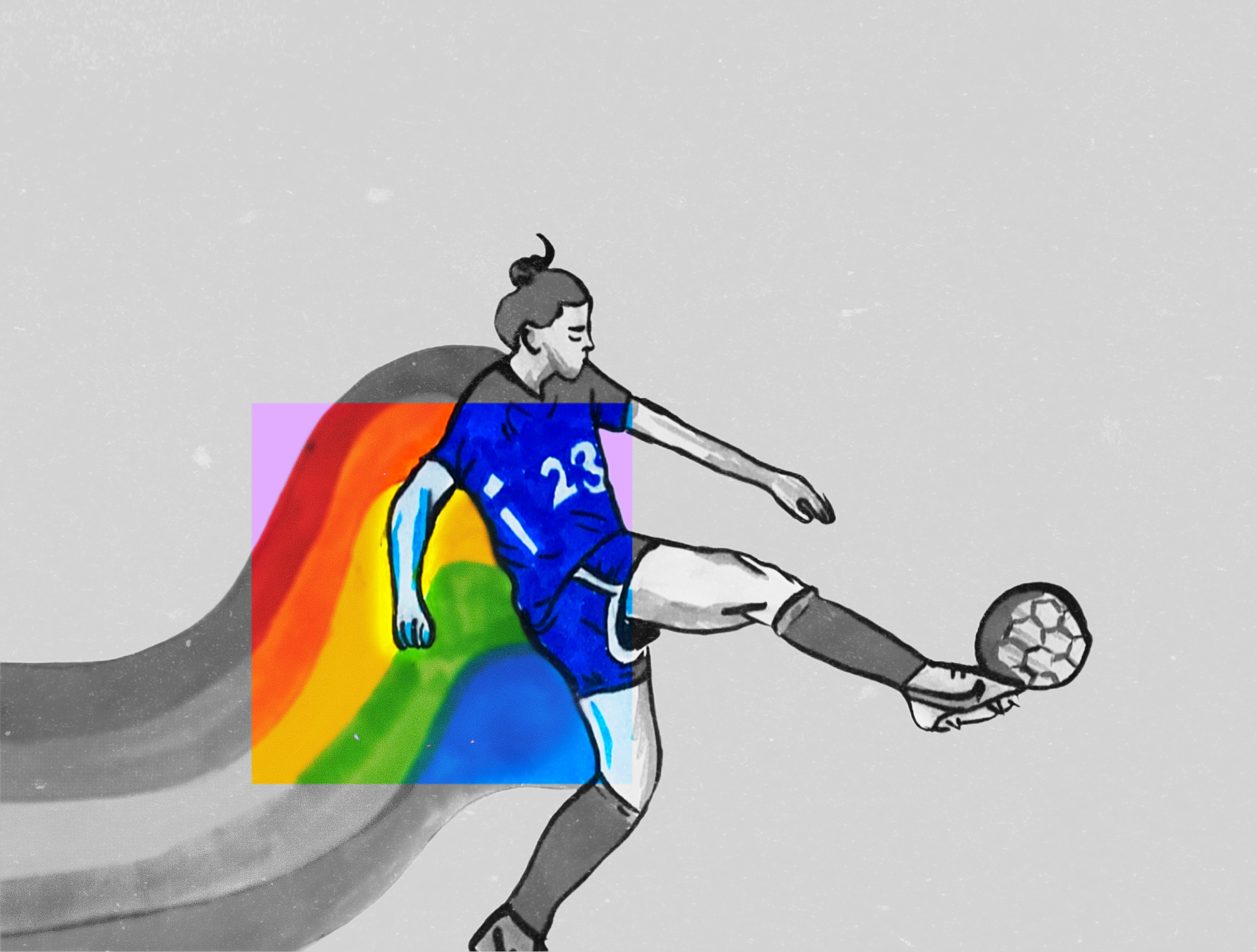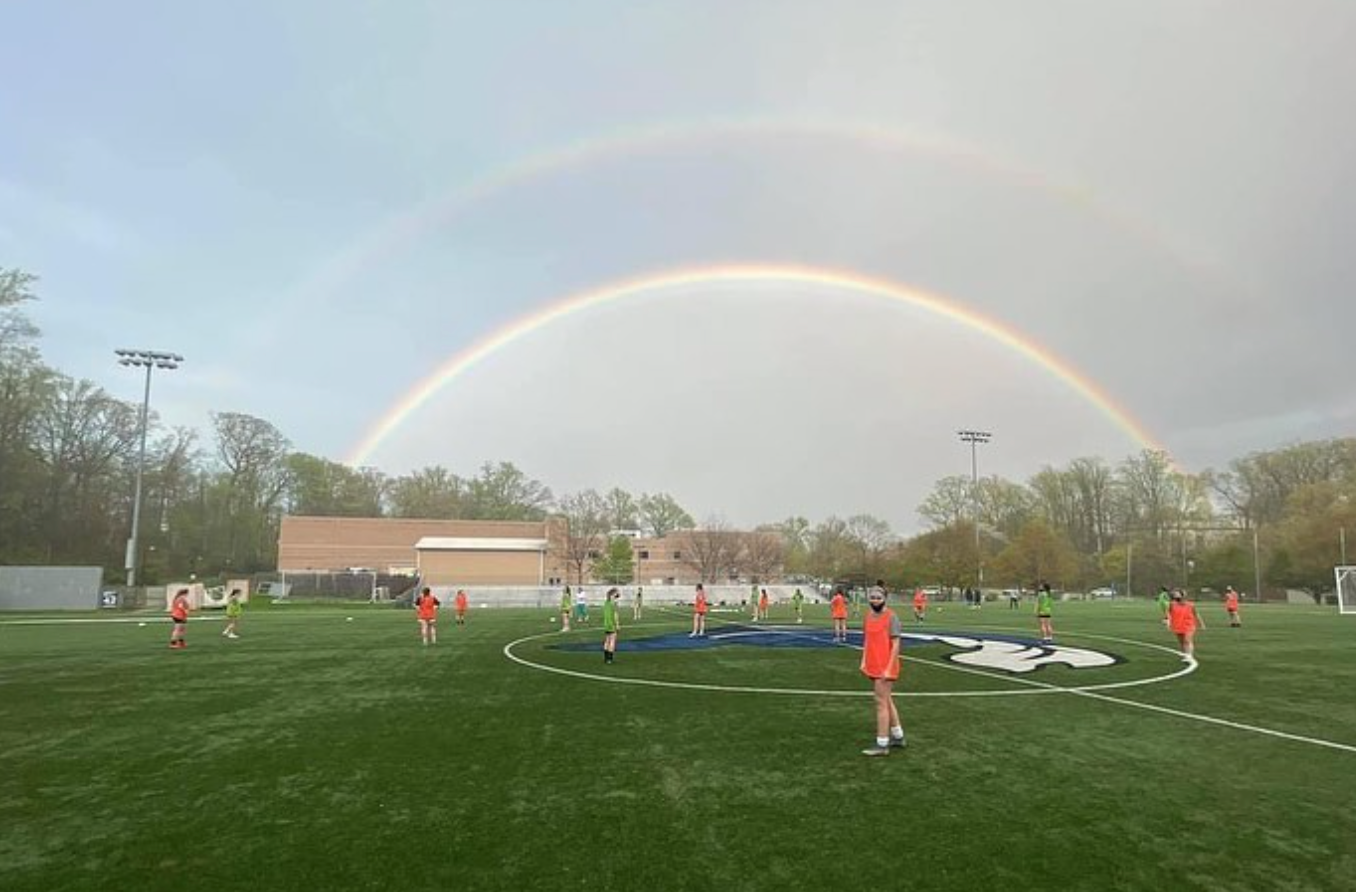Growing up in rural central Pennsylvania, being gay meant being invisible. It’s safe to say I didn’t see much representation growing up there, but when I came to college and joined the women’s soccer team, I instantly found a community. For the first time in my life, I saw people like me and had teammates who accepted me for who I was.
It is not an anomaly for women in the LGBTQ+ community to find a safe space in college athletics. A Journal of Intercollegiate Sport study surveyed 159 college student athletes from two public universities to measure their level of engagement as LGBTQ+ allies. The study reported that no women athletes indicated that they were not an ally. They then noted that only women student athletes reported the importance of accepting all teammates regardless of sexual orientation.
Becoming visible

Seeing gay representation within college athletics is so important for young athletes. The more representation we see in the media, the more acceptance there will be overall for the LGBTQ+ community. With social media more present in our lives than ever, it’s the easiest time in history to find representation in college sports.
Griffin Maxwell Brooks, a transgender nonbinary student athlete at Princeton University, has 1.2 million followers on TikTok. They are an influencer who creates content about fashion and the struggles of being a transgender person in college athletics.
Sedona Prince is another example of representation. She has 2.8 million followers on TikTok and is openly gay and talks often about her sexuality and playing basketball at the Division I level. Student athletes now feel safer being open about their sexual orientation online because, since 2021, Title IX is supposed to protect students from discrimination based on sexual orientation and gender identity.
Social media spotlights athletes
Having a spotlight on student athletes like Prince and Brooks creates an important and inclusive environment. In 2023, legislatures across the country have so far announced 124 new bills meant to restrict LGBTQ+ rights, expression, and safety.
Brooks breaks barriers by being a nonbinary fashion icon for Gen Z and by being an elite athlete. Brooks’ video speaking about why transgender athletes should be protected and compete went viral with 349,600 likes on TikTok. Brooks is not afraid to make themself visible despite our political climate.
Finding community
The National Collegiate Athletic Association follows principles that include gender equality and inclusion. The acceptance of teammates is key to a better student athlete college experience for members of the LGBTQ+ community. 31.7 percent of student athletes said their teammates’ response was better than that of other students at their school. An accepting locker room can be the difference between an athlete opening up about their sexuality or feeling forced into silence.


 Cabrini’s women’s soccer is one of the most inclusive and accepting groups on campus. It is not a coincidence that in the past three years, five players have come out to our team. Many of them told their teammates before anyone else.
Cabrini’s women’s soccer is one of the most inclusive and accepting groups on campus. It is not a coincidence that in the past three years, five players have come out to our team. Many of them told their teammates before anyone else.
This past fall, for the first time, Cabrini women’s soccer participated in Play With Pride Week. United Soccer Coaches developed the week to support diversity and inclusion within the sport. The whole team wore rainbow laces in their cleats and rainbow ties in their hair all week to champion the cause.
For me, coming out to my team was easy. With such a large community of LGBTQ+ members and allies, it was nothing out of the ordinary. In a world where being gay is often seen as abnormal, once I came out on my team, I almost felt as if I fit in more. My ally teammates were all very supportive and probably love Play With Pride Week more than any of our LGBTQ+ players do. If I never came to play at Cabrini or if the team hadn’t been as accepting, I truly don’t know if I’d be out today.






